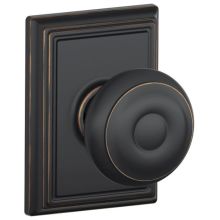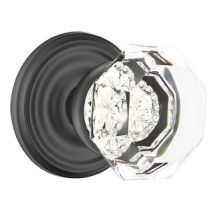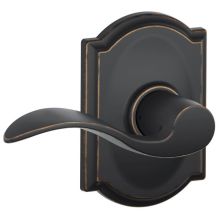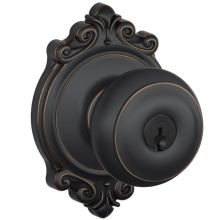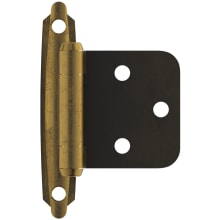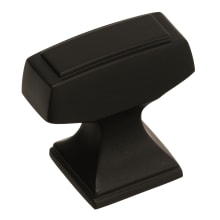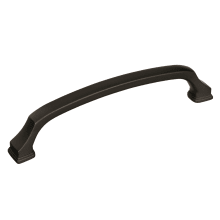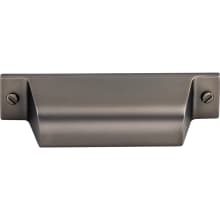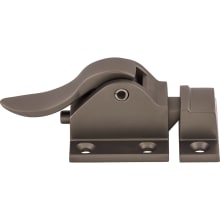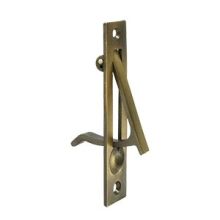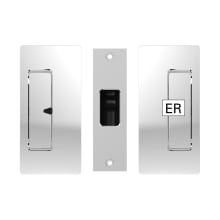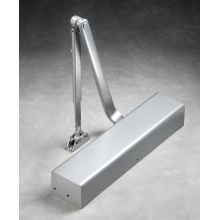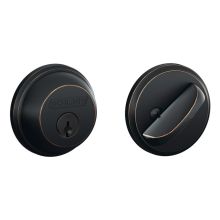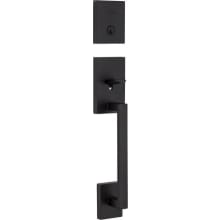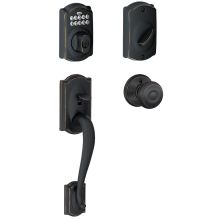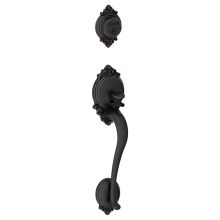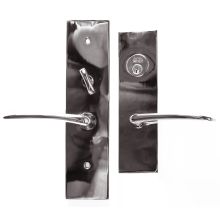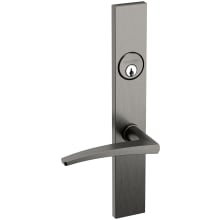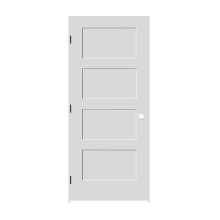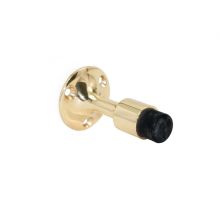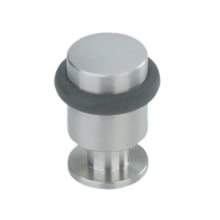Hardware Buying Guide Glossary
Get an understanding of all the popular terms that come up as you shop for door and cabinet hardware.
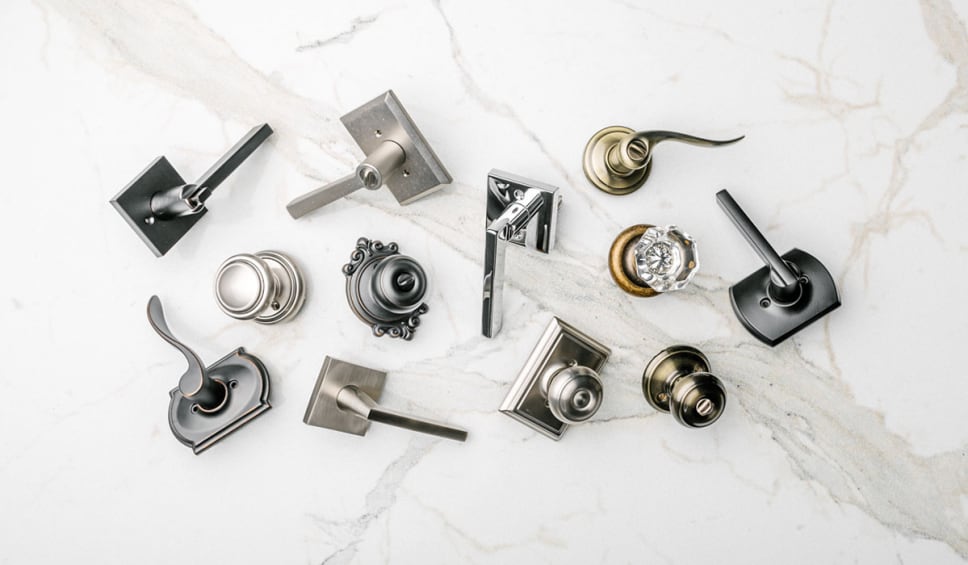
You'll see a lot of terms when you're buying door and cabinet hardware for a renovation project - but keeping it all straight can be tough. Use this glossary of hardware terms to stay on top of industry lingo and get the components you need to pull off the perfect job.
ANSI Lock and Security Standards
The American National Standards Institute created this grading system for door locks:
Grade 1.
- Grade 1 is the highest level of ANSI grades. These locks and deadbolts are fit for commercial security but can be used in homes as well. Grade 1 requires a door knob to withstand 800,000 open-and-close cycles, six door strikes and a 360-pound weight test.
Grade 2.
- Grade 2 is only appropriate for residential and light commercial applications. This grade requires a door knob to go through 400,000 open-and-close cycles.
Grade 3.
- Grade 3 locks meet most residential building requirements. They're not always recommended for main entry points but are typically adequate for secondary entry points. These knobs must go through at least 200,000 open-and-close cycles.
Barn Door Hardware

Barn door hardware refers to the components necessary to install and operate a sliding barn door. It includes tracks and fitting sets, as well as mounting hardware.
BHMA Certification
In conjunction with ANSI lock and security standards, BHMA certification classifies door locks in order of performance. Grade 1 is the strongest and most durable, providing commercial-level protection. Grade 2, the intermediate level, provides residential-level protection. Grade 3 provides good protection and meets most residential requirements.
Bore Hole
A bore hole is the large-diameter hole in a door where you mount the door knob.
Cabinet and Drawer Hardware
Cabinet hardware includes all the parts you need to make your cabinets functional, from the knobs you use to open them to catches that hold them shut. Drawer hardware also includes pieces like slides that let you open and close the drawers.

Backplates
- A cabinet backplate is the decorate element behind the knob or cabinet pull. It's typically flush with the cabinet's surface.
Catches
- A cabinet catch - also called a latch - is what holds cabinets shut. Cabinets with catches often require a handle to open.
Magnetic Catches
- Magnetic catches feature two or more magnets that pull together when the cabinet door is nearly closed.
Roller Catches
- Roller catches feature two rollers that interlock with a U-shaped plate on the cabinet door.
Touch Catches
- Touch catches feature magnets and a spring, and they don't require exterior hardware. When you press the cabinet door above the catch, the spring opens the door partway.
Drawer Slides
- Drawer slides - commonly called drawer runners - are the small tracks that let you open and close your drawers.
Hinges
- Door hinges and cabinet hinges are movable joints that allow doors to swing open and closed.
Knobs
- Cabinet and drawer knobs, which are similar to doorknobs (but they don't turn) are available in a wide range of styles, including round, square and oval.
Pulls
- Cabinet pulls and drawer pulls feature a space for your fingers behind them. They're available as straight bars, arches, cup-style pulls and a variety of other styles.
Cabinet Drawer Edge Pull
- Edge pulls - commonly called finger pulls - are a type of low-profile hardware that form a ledge over the top of a cabinet or drawer. Your fingers grip beneath it to pull it out.
Closet and Pocket Door Hardware
Closet and pocket door hardware refers to a variety of parts that let you operate doors in interior spaces.

Coin-Turn Release
- Coin-turn release is a type of closet door handle that features a coin-sized slot you can turn to unlock the latch.
Cup Pull
- A cup pull is a cabinet handle that's enclosed on three sides and hollow beneath, providing you with grip space.
Dummy Set
- Dummy knob sets are false doorknobs used primarily for decoration. They're flush-mounted, rather than inserted into a bore hole.
Fitting Set
- A fitting set is hardware for a sliding door, including barn doors and glass doors. The set typically includes a door channel guide and a running track, as well as gears, a track stopper, suspension plates and a wall buffer.
Flush Pull
- A flush pull is designed for use on sliding doors, pocket doors and some cabinet doors. They're designed to keep the pull handle flush with the face of the door.
Keyed Entry
- Door handles that feature keyed entry require a key to lock and unlock them.
Passage Door
- Passage doors are used in rooms that don't require keyed entry, such as closets and hallways. You can operate the lock from both sides of the door.
Passage Handle
- A passage handle is used on passage doors that you don't need to secure with keyed entry.
Pocket Door
- A pocket door is a sliding door that tucks away into a compartment in an adjacent wall. When it's fully open, you can't see a pocket door.
Pocket Door Edge Pull
- A pocket door edge pull is a small latch used to open the door. It's installed on the side of the door panel, so even when the door is concealed in its pocket, you can access it to pull the door shut.
Privacy Handle
- Privacy handles are used in bedrooms, bathrooms and other rooms where privacy is a necessity. You can lock them with a turn button or push button from one side, and you can unlock them with an emergency key from the other side.
Ring Pull
- A ring pull is a ring-shaped pull designed for opening a drawer, cabinet or door.
Thumb-Turn and Release
- Thumb-turn and release refers to a type of door security that features a small lock you turn with your forefinger and thumb.
Track
- A sliding door track, used in closets, pantries, barn doors and pocket doors, is what holds a sliding door in place as you open and close it.
Commercial Hardware
Commercial door hardware is sturdy, durable and reliable hardware designed for commercial applications, including retail shops, multifamily housing and businesses. Typically, commercial hardware falls under ANSI Grade 1 security.
Deadbolt
A deadbolt is a bolt you engage by turning a knob or key. Unlike other locks, a deadbolt doesn't use spring action.
Door Entry Set
A complete door entry set includes a handle or knob with a locking mechanism, a deadbolt and trim. It comes with exterior and interior hardware.

Door Hardware Parts
Door hardware parts refer to a wide range of hardware designed for doors, and it covers everything from knobs and latches to deadbolts, hinges and tracks.
Door Hinges
- A door hinge is a movable joint affixed to a door on one side and a door jamb on another. It allows the door to swing open and closed.
Door Knobs
- A door knob is a handle that allows you to open and close a door. Typically, knobs are round or oval, although other shapes are available. Several types of knobs are available, including privacy, passage, keyed entry and keyless entry.
Door Levers
- Designed for ease-of-access, door levers are long, lever-shaped handles that perform the same functions as door knobs do. You can choose between privacy, passage, keyed entry and keyless entry door levers.
Handing
Handing refers to the type of door handle set you need. They're available in left, right, left-hand reverse and right-hand reverse. To determine handing, face the door from the outside. If the hinges are on the left, you need a left-handed door set; if they're on the right, you need a right-handed door set.
Left-Hand Door
- A door with hinges on the left when the door opens into the room is a left-hand door.
Right-Hand Door
- A door with hinges on the right when the door opens into the room is a right-hand door.
Left-Hand Reverse Door
- A door with hinges on the left when the door opens toward the outside of the room is a left-hand reverse door.
Right-Hand Reverse Door
- A door with hinges on the right when the door opens toward the outside of the room is a right-hand reverse door.
Home Hardware
Home hardware is an umbrella term that refers to all the bits and pieces that make your home function. It includes everything from door knobs and hinges to drawer pulls and screws, nuts and bolts.
Keyed Hardware
Keyed hardware is door hardware that requires a key to lock and unlock.
Keyless Entry
Keyless entry systems let you lock and unlock your doors without using a key. Some keyless entry systems use short-range remote transmitters, while others use Bluetooth® or WiFi. Still others use keypads that require you to punch in a code at the door to gain access.
Keypad
Keypads are used on keyless entry systems. They're programmable and require you to input a code to unlock a door.
Locking Mechanism
A locking mechanism is the machinery that makes a lock latch shut and allows it to open.
Electronic Locks
- Electronic locks operate with electrical current. Most keyless entry locks are electronic.
Mechanical Locks
- Mechanical locks operate using tumblers, levers or latches. Most require keys.
Mortise Locks
- Mortise locks are locks that require you to use a pocket - technically called a mortise - that's cut into the door. The lock case fits in the mortise, and it contains two locking devices inside (a latchbolt and a deadbolt).

Pin and Tumbler Locking Mechanism
- Pin and tumbler locking mechanisms feature spring-loaded pins inside cylinders. Only the correct key compresses the right pins, enabling you to turn the lock.
Rim Locks
- Rim lock mechanisms attach to the surface of a door. One side locks and unlocks with a latch, and the other side requires a key.
Tubular Locks
- Tubular locks are the most common types used, particularly in interior doors and on secondary entry points. Most doors have boreholes drilled specifically for tubular locks.
Multi-Point Door Hardware
Multi-point door locks use multiple hook bolts, rather than one simple sliding bolt, to secure a door.
Residential Hardware
Residential hardware is a broad term that includes everything that makes your home functional. It includes tracks to operate sliding doors, cabinet pulls, locks and everything in-between.
Sliding Door Hardware
Sliding door hardware includes complete fitting sets or individual components like tracks, running gears and handles.
UL Standards in Door Hardware
Underwriters Laboratories, an independent product safety certification organization, created the UL 437 security rating for door locks.
Window Hardware
Window hardware refers to the components that lock, open and close your windows. They can include parts like crank handles, lift rails and handles, and cam locks.
Got Questions? We Can Help.
Our experts are ready to help you find the perfect products for your needs. Call us at 800-375-3403 to ask questions, get help placing an order, or discuss your account. You can also use our Live Chat feature to contact a customer service representative or check out our DIY articles to get inspiration and guidance on your next project.


